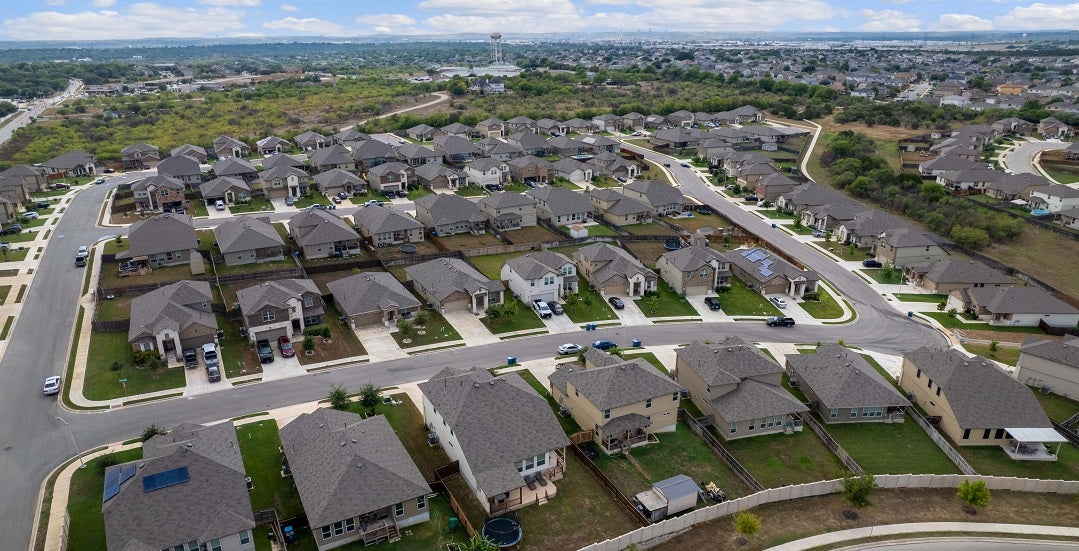This year’s State of Housing in Harris County and Houston — the institute’s fifth annual report of its kind — focuses exclusively on homeownership. Last year’s report focused on renting, given that renters represent a large and growing share of the county’s population. Many renters who want to become homeowners find themselves unable to make that move.
This post is part of a series highlighting the findings from the 2024 State of Housing in Harris County and Houston.
To start, the price of a home is rapidly increasing: Harris County home prices increased 43% from 2018 to 2023. Buying power has remained flat during the same time period, increasing only 1.2% for the median household income. Wages have not kept up with home price increases, and high interest rates have raised the cost of borrowing. The result is that homeownership is harder to attain, and the affordability gap — the difference between what people can afford and the homes that are actually for sale — has increased 275% in five years (four times bigger, in other words).
This year’s report expanded its scope to include data on Fort Bend and Montgomery counties, the two largest suburban neighbors of Harris County, where homeownership is increasing faster. Since 2010, these two counties have added as many owner-occupied households as all of Harris County despite having only one-third the population. Fort Bend’s number of homeowner households increased 58% and Montgomery’s increased 48%, compared to only 20% in Harris County and 10% in the city of Houston.
This may be related to the fact that Harris County is running out of affordable places. Only seven of the county’s 143 neighborhoods have homes affordable to a county’s median-earning household. Even for an upper-middle income family earning $100,000, or 120% of the county’s median family income, a majority of Harris County neighborhoods (83 of 143) are unaffordable. There simply is not enough affordable housing stock spread around the county.
Another worrisome trend was a decline of Black homeownership, particularly in the central city. In 2022, the city of Houston had fewer Black owner-occupied households than in 2010. Two neighborhoods (South Park and Trinity/Houston Gardens) lost more than 1,000 Black homeowner households in that period. Black homeownership did increase in terms of overall number in Harris County (by about 17,000 households), but relative to other ethnic groups, Black homeowners represented a smaller proportion of the county’s home-owning households in 2022 than in 2010. This raises concerns about how past and current inequities in housing policy and home lending continue to present obstacles to homeownership.
As people search for affordability and buy homes in less affluent areas, gentrification can follow. The report shows that almost 1 in 10 Harris County neighborhoods displayed demographic signals of gentrification. These 13 neighborhoods were identified because they had at least 30 homes sell or transfer to a new owner between 2017 and 2022, and the transferred homes were relatively affordable, being valued below 150% of the median countywide home price in 2017, or $217,000. In the five years between 2017 and 2022, the neighborhoods where these transfers took place also experienced decreasing shares of non-White residents, increasing single-family home values, increasing shares of residents with bachelor’s degrees and increasing household incomes.
The news about housing has some silver linings, however.
Despite the high cost of a home, the population of homeowners is increasingly reflecting the region’s diversity. The suburbs, in particular, have diversified. In Harris, Fort Bend and Montgomery counties, the share of homeowners who are Hispanic has grown, sometimes by a lot. For example, in Harris County the number of Hispanic homeowner households grew 47% since 2010, adding over 100,000 Hispanic owner-occupied households. In Montgomery County, the share of homeowners who are Black doubled from 2010 to 2022, though still remained low (5%). Almost one-quarter of Fort Bend’s homeowners are Asian.
We also appear to be relatively more affordable than other major cities. The city of Houston had smaller affordability gaps than Dallas and Austin, as well as Chicago and Atlanta — the central cities of the metropolitan areas that are closest to the Houston metro’s population size. Only San Antonio’s affordability gap was smaller. On a county level, Harris County had the smallest affordability gap of all of the central urban counties we studied.
Our affordability challenges may be less daunting than, say, Austin’s — where the median home value was $574,000 and median household income was $95,259 — but this does not mean that Harris County and Houston offer accessible homeownership to most of the people who live here.
Once it is lost, our reputation as a city where working-class families can find stability and build generational wealth will be difficult to reclaim. But amid the challenge is our opportunity: Harris County and Houston’s affordability — what remains of it — makes us one of the best-positioned urban areas in the country to meet our housing needs.

